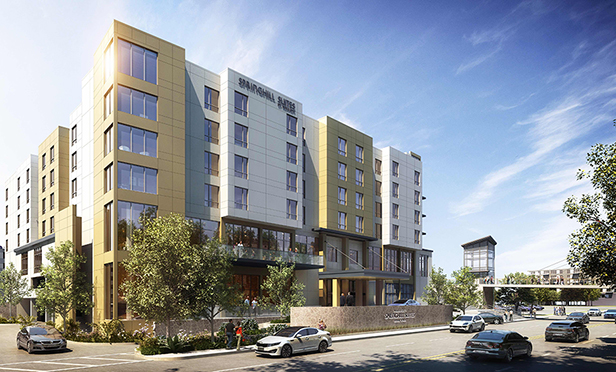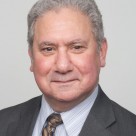 HALL Structured Finance closes a $43.3M loan to finance the construction of a Springhill Suites in Boston, Massachusetts.
HALL Structured Finance closes a $43.3M loan to finance the construction of a Springhill Suites in Boston, Massachusetts.
DALLAS—Navigating the world of construction lending can be a tricky process, especially at a time in the market upcycle where the question of duration starts to loom large. This is especially true for certain types of hotel properties, which have long worn the “specialty” label, despite the segment's status as a primary CRE food group.
Mike Jaynes, president of HALL Structured Finance (HSF), discusses how HSF has carved out a niche in hotel construction financing and added multifamily to its lending focus over the past few years. In his role, Jaynes can provide expert tips to navigate the loan process, certainly as it relates to his shop.
“In terms of individual loan volume, our sweet spot is $15 to $85 million,” he explains. “We like mid-rise projects in both hotel and multifamily product types, especially in growth markets.” But growth doesn't mean major, necessarily. “It can be secondary or major. One of the key factors we assess is the risk associated with project completion.”
Actually, 95 percent of the projects in HSF's pipeline are hotels. “We've closed about $170 million in loans year-to-date,” he reports. “We have $400 million that are in the closing process, approved by our committee, and those are all hotels. By contrast, we have a $46 million-plus loan approved by our internal committee for a mid-rise multifamily project.”
The skew toward hotels is a mark both of the lending challenges inherent in that industry and of HSF finding a need and filling it. “Hotels are such a specialty product,” he says. “It's commercial real estate with very intense operations around it. As such, the pool of other groups who provide financing like ourselves is much smaller than banks or other private lenders that focus mainly on leased office, retail or industrial. That's one of the reasons we decided to focus on hotels decades ago; the competitive set among lenders was much more limited.”
Despite companies like HSF, borrowers are still hampered by hotel-lending challenges, which are becoming “more pronounced as the days go on. As we get further along on this economic run, speculation heightens as to when it will all run out. But, in general, it's riskier, because while hotels are always the first to reap the benefits of a market on the upswing, they're also the first to feel the pain when a market starts to fall.”
To avoid borrower pain, there are some guidelines potential clients should follow. First, HSF is not an institutional lender. “Our typical borrower may not have the balance sheet as it relates to overall net worth and liquidity,” Jaynes says. “But at the end of the day, no matter what that balance sheet says, we want to make sure it's enough to incentivize them to get the project done on time and at the highest quality level.
“Most of our borrowers might have a track record,” he continues, “but they're typically small, so maybe they've built four or five hotels. In some cases, we've financed developers planning their first hotel if they have a background in the multifamily industry, something to give us the comfort that they can build the box they're planning.”
He also says the experience of the team the borrower surrounds himself with–the architect, the GC and the operator, when that's applicable–is also key. HSF will do a deeper dive into their track records, as well.
Naturally, a well-conceived project is also a must. Borrowers have to “substantiate demand generators in the area,” says the HSF president, “and hopefully that's a diverse group of generators that are not tied to just one industry, such as oil and gas.
“Finally, we require real cash equity behind the deal,” he continues. “Typically it's at least 25 percent of the overall hard and soft cost of the capital stack. So we're typically in that 65-to-75 percent loan-to-cost range when we're sizing the deal.” He explains that if the borrower is a repeat customer, the track record is built in and those numbers could stretch.
With all of those boxes checked, the borrower can expect a close within 45 to 60 days. “Our pricing is typically 30-day Libor with a seven to 8.45 spread overall,” says Jaynes. “We typically charge a couple of points at closing and one point as an exit fee. The typical structure is a 3:1:1–three-year interest-only with up to two one-year earned extensions.” That's been the formula for success . . . for HSF as well as for its clients. Looking through the end of the year, Jaynes sees a market that is, at least, “very stable. We're looking at a record year.”
© Touchpoint Markets, All Rights Reserved. Request academic re-use from www.copyright.com. All other uses, submit a request to [email protected]. For more inforrmation visit Asset & Logo Licensing.







